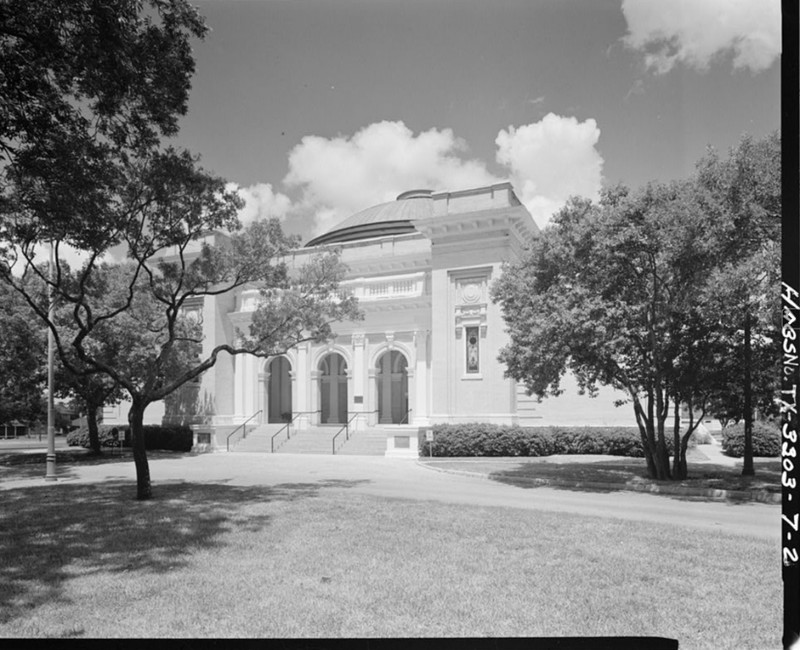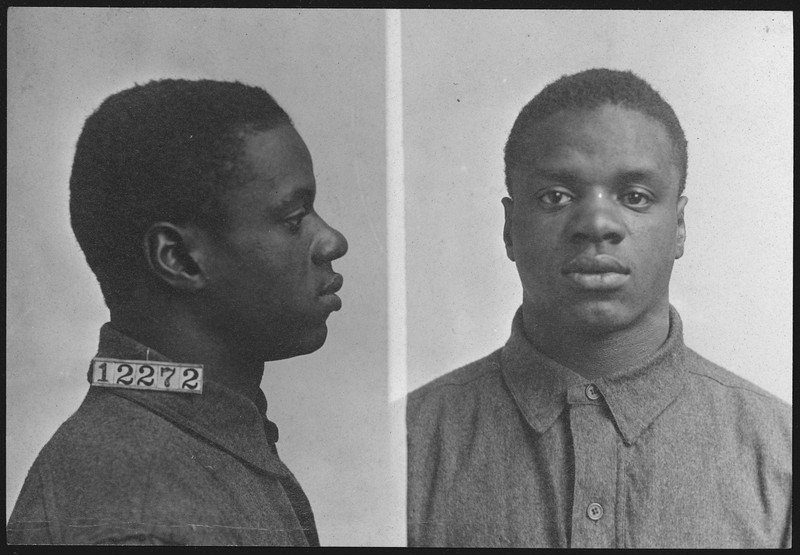Fort Sam Houston's Main Post Chapel
Introduction
Text-to-speech Audio
Images
A scene of one of the court-martial trials at the Gift Chapel

Fort Sam Houston Gift Chapel

Houston Post front page head

Private LeRoy Pinkett, 23 years old, convicted of murder and assault with intent to murder

Backstory and Context
Text-to-speech Audio
From November 1917 to March 1918, 118 24th Infantry soldiers were tried for disobeying orders, mutiny, murder and aggravated assault. All men pleaded not guilty and were represented by a single attorney with no trial experience and had very little time to prepare. The first court-martial took place on December 10, 1917, with three one-star generals and nine colonels making up the first trial's military tribunal. Sixty-three of the soldiers were tried at once and all were found guilty. The trial was quick and the sentences were harsh: 13 men were to be executed, 41 were to be confined to prison for life, one soldier to be jailed for two and a half years and three soldiers to be jailed for two years.
The following morning, on December 11, 1917, the 13 soldiers to be executed were woken before dawn and driven to a hastily constructed gallows located near what is today the 15th tee on the Fort Sam Houston Golf Course. They were hanged in great secrecy at 7:17 AM in the presence of military escorts and Sheriff Tobin of San Antonio.
The second court-martial for 15 soldiers convened at the Gift Chapel on December 17, 1917. This time, the military record indicated that Commander-in-Chief President Woodrow Wilson would have the final say on the validity of the sentences, which were death by hanging for five soldiers, dishonorable discharge and ten years of hard labor for three soldiers and dishonorable discharge and seven years of hard labor for the remaining seven soldiers. The third and final court-martial took place on February 18, 1918, for 39 soldiers. This time, 11 soldiers were sentenced to death, 12 soldiers received life sentences, nine soldiers were given 15 years of hard labor, five soldiers were given two years of hard labor and two soldiers were acquitted. President Wilson took all of the sentences from the final courts-martial under review and a total of 5 soldiers were hanged on September 17, 1918, in secret just as before. All of the executed soldiers were buried in numbered graves at Fort Sam Houston but were later re-buried at the national cemetery under standard-issue headstones.
The sentencing after the Camp Logan Riot was hotly debated and forcefully contested by the NAACP, whose campaigning eventually helped the majority of the soldiers with long prison sentences to be paroled by 1930. Public criticism prompted a major and immediate reform within the Army wartime court proceedings, allowing soldiers a right to appeal a conviction even during a time of war. In 1918, General Brig. Gen. Samuel Ansell prohibited the execution of any death sentence before review which eventually was formalized into today's Army Court of Criminal Appeals.
This shift in the appeals process might be considered one of the few silver linings of the Camp Logan Riots and the event did little to improve race relations in Houston or the Army at large, for that matter. A difficult and nuanced historical event, the experience of the soldiers of the 24th Infantry can be viewed as direct testimony to the state of race relations in 1917 and a warning to our society in modern times.
Sources
DeKunder, David. Gift Chapel stands out among JBSA-Fort Sam Houston landscape, Joint Base San Antonio. October 10th 2018. Accessed October 22nd 2020. https://www.jbsa.mil/News/News/Article/1658333/gift-chapel-stands-out-among-jbsa-fort-sam-houston-landscape/.
Historic American Buildings Survey, Creator. Fort Sam Houston, Gift Chapel, Wilson Street, between Hancock & Connell Roads, San Antonio, Bexar County, TX. Bexar County San Antonio Texas, 1933. Documentation Compiled After. Photograph. https://www.loc.gov/item/tx0530/.
Houston Riot Court Martial in San Antonio, VaMonde. Accessed October 20th 2020. https://www.vamonde.com/posts/houston-riot-court-martial-in-san-antonio/9722/.
Library of Congress
Historic American Buildings Survey (Library of Congress)
South Texas College of Law Digital Collection
U.S. National Archives
